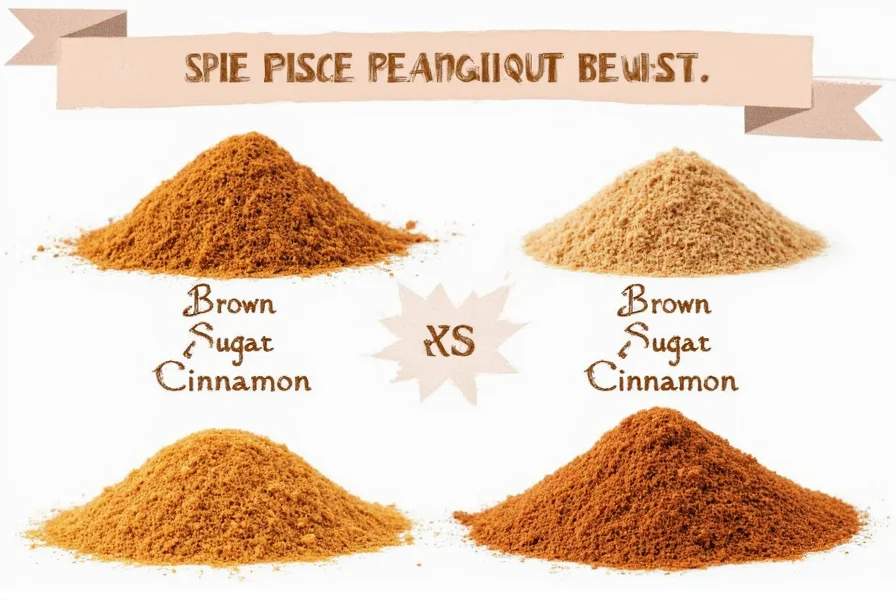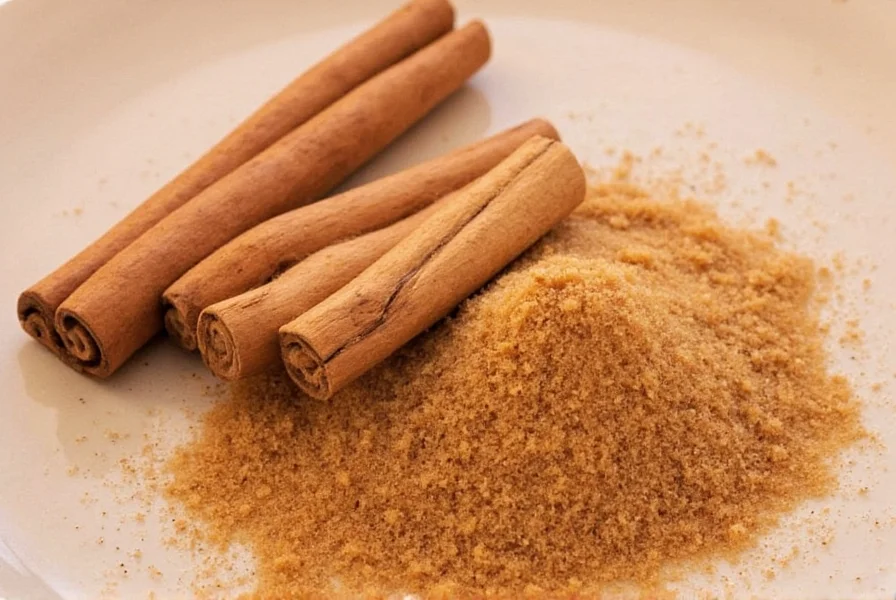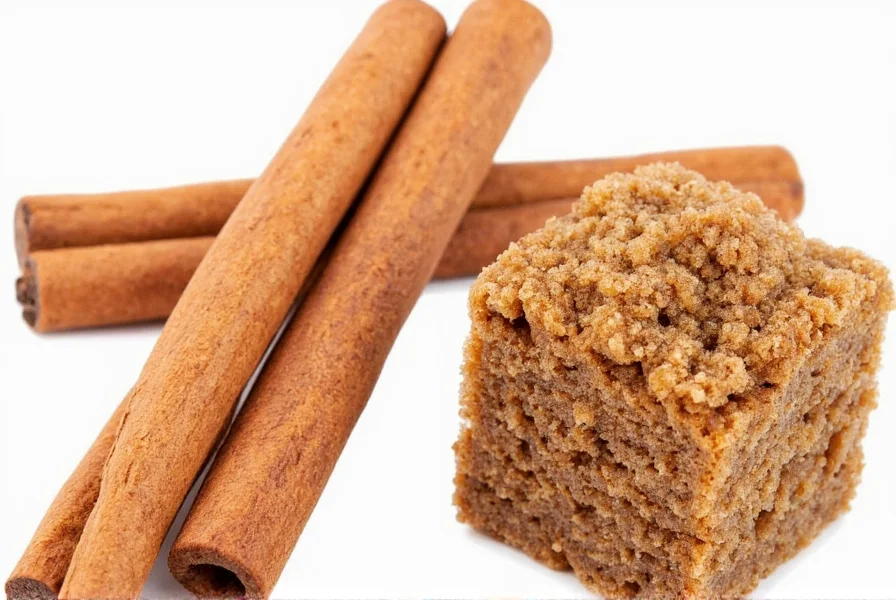Understanding why brown sugar and cinnamon work so well together requires examining their complementary flavor chemistry. Brown sugar contains molasses, which brings deep caramel and toffee notes with subtle bitterness that balances cinnamon's spicy warmth. When combined, they create what food scientists call sensory synergy—where the whole flavor experience becomes greater than the sum of its parts.
The Science Behind This Perfect Pairing
Cinnamon contains cinnamaldehyde, the compound responsible for its distinctive spicy aroma. Brown sugar's molasses content provides complex sugars that undergo Maillard reactions during baking, creating new flavor compounds. When these ingredients combine during cooking:
| Chemical Process | Effect on Flavor | Best Applications |
|---|---|---|
| Maillard Reaction | Creates nutty, toasty notes | Baked goods, roasted vegetables |
| Caramelization | Develops buttery, complex sweetness | Sauces, glazes, toppings |
| Volatilization of Oils | Releases cinnamon's aromatic compounds | Hot beverages, warm desserts |
Professional bakers typically use a 4:1 ratio of brown sugar to cinnamon for balanced flavor without overwhelming either component. This ratio works particularly well for homemade cinnamon sugar with brown sugar applications where you want both sweetness and spice to shine through.
Culinary Applications Beyond the Obvious
While cinnamon rolls represent the most famous brown sugar cinnamon recipe, this combination shines in less expected applications:
- Savory rubs for roasted sweet potatoes or carrots (¼ tsp cinnamon per cup of brown sugar)
- Coffee and tea sweeteners - mix with a bit of creamer for a flavored stir-in
- Yogurt and oatmeal toppings that provide sweetness without refined white sugar
- Homemade granola where the mixture helps create perfect clusters
- Fruit crumbles that benefit from the deeper flavor profile compared to white sugar

Nutritional Considerations
Many home cooks search for healthy alternatives to plain sugar with cinnamon, hoping for significant nutritional benefits. While cinnamon does contain antioxidants and may help regulate blood sugar, the reality is more nuanced:
- Brown sugar contains marginally more minerals than white sugar due to molasses content, but the difference is nutritionally insignificant in typical usage amounts
- Cinnamon's potential blood sugar benefits require larger quantities than typically used in recipes
- The combination still counts as added sugar in your diet
- Using this mixture can help reduce overall sugar consumption by enhancing perceived sweetness
For those exploring brown sugar cinnamon health benefits, the primary advantage lies in flavor enhancement that may allow using less total sweetener in recipes while maintaining satisfaction.
Storage and Preparation Tips
Creating the perfect brown sugar cinnamon mixture for baking requires proper technique:
- Always sift cinnamon before mixing to prevent clumps
- Use light brown sugar for most applications (dark brown sugar works better for gingerbread-style recipes)
- Mix thoroughly in a glass or ceramic bowl (plastic can retain previous flavors)
- Store in an airtight container away from heat and light
- Use within 3 months for optimal flavor (cinnamon loses potency over time)
When recipes call for brown sugar and cinnamon in cookies or other baked goods, creaming the brown sugar properly with butter creates the ideal texture. The moisture in brown sugar helps create chewier cookies compared to white sugar formulations.
Creative Recipe Ideas to Try
Move beyond basic brown sugar cinnamon roll recipes with these innovative applications:
- Cinnamon-Sugar Roasted Nuts: Toss almonds or pecans with egg white, brown sugar, cinnamon, and a pinch of salt
- Spiced Brown Sugar Rim for cocktails using a mixture of brown sugar, cinnamon, and citrus zest
- Overnight Oats Swirl: Layer yogurt, oats, and a brown sugar-cinnamon mixture in a jar
- Apple Cinnamon Brown Sugar Butter for pancakes or toast
- Spiced Brown Sugar Simple Syrup for autumn-inspired beverages

Common Mistakes to Avoid
Even experienced cooks make these errors with brown sugar cinnamon combinations:
- Using too much cinnamon, which creates bitterness rather than warmth
- Not adjusting liquid content when substituting brown sugar for white sugar
- Using old, stale cinnamon that has lost its volatile oils
- Mixing the dry ingredients too far in advance (cinnamon can absorb moisture)
- Overbaking items with this combination, which can cause bitter caramelization
For the best results with your brown sugar cinnamon baking projects, always measure spices properly using dedicated spice measuring spoons (not your regular set) and store cinnamon in the freezer for maximum freshness retention.
Conclusion
The enduring popularity of brown sugar cinnamon stems from its perfect balance of sweet and spice—a combination that enhances both simple weeknight desserts and special occasion treats. By understanding the science behind this pairing and applying proper techniques, home bakers can maximize flavor in everything from basic cookies to sophisticated pastries. Whether you're searching for easy brown sugar cinnamon recipes or exploring the flavor chemistry of brown sugar and cinnamon, this classic combination offers endless possibilities for culinary creativity.
Frequently Asked Questions
What's the ideal ratio of brown sugar to cinnamon for baking?
The standard ratio is 4:1 (4 parts brown sugar to 1 part cinnamon). For most applications like cinnamon rolls or coffee cake, use ¼ cup brown sugar with 1 tablespoon cinnamon. This provides balanced flavor without overwhelming either component. Adjust to taste based on your cinnamon's potency and personal preference.
Can I substitute brown sugar for white sugar when using cinnamon?
Yes, but with adjustments. Brown sugar contains more moisture than white sugar, so when substituting in recipes with cinnamon, reduce other liquids by 1-2 tablespoons per cup of brown sugar used. The molasses in brown sugar enhances cinnamon's warmth, creating a more complex flavor profile ideal for autumn baking.
Why does my brown sugar cinnamon mixture get hard?
Brown sugar naturally hardens when exposed to air due to moisture loss. To prevent this in your cinnamon mixture, store it in an airtight container with a terra cotta sugar saver or a piece of bread. The bread will dry out instead of your sugar mixture. Properly stored, your homemade brown sugar cinnamon blend should remain soft for 2-3 months.
Does brown sugar with cinnamon have health benefits?
While cinnamon contains antioxidants and may help regulate blood sugar, the amounts typically used in brown sugar cinnamon mixtures are too small to provide significant health benefits. The primary advantage is flavor enhancement that may allow using less total sugar in recipes. Remember that brown sugar with cinnamon still counts as added sugar in your diet.
How can I make my brown sugar cinnamon mixture more flavorful?
For deeper flavor in your brown sugar cinnamon blend, toast the cinnamon briefly in a dry pan before mixing (30-60 seconds over medium heat). You can also add complementary spices like a pinch of nutmeg or cardamom. For baking applications, consider using dark brown sugar instead of light for a more robust molasses flavor that stands up to cinnamon's intensity.











 浙公网安备
33010002000092号
浙公网安备
33010002000092号 浙B2-20120091-4
浙B2-20120091-4